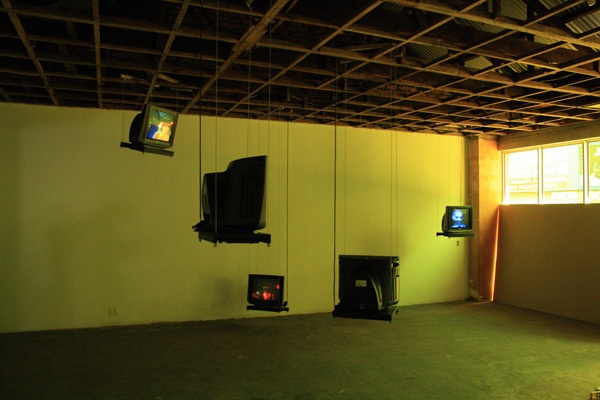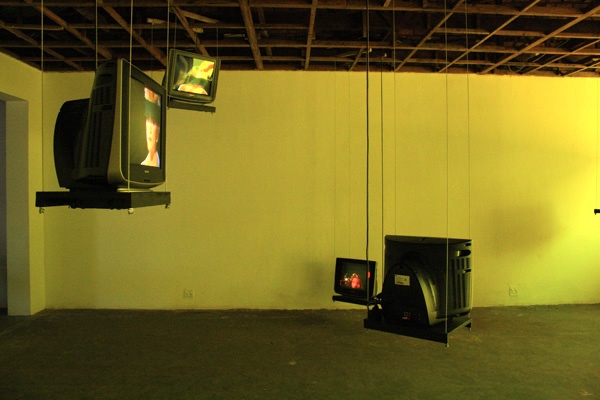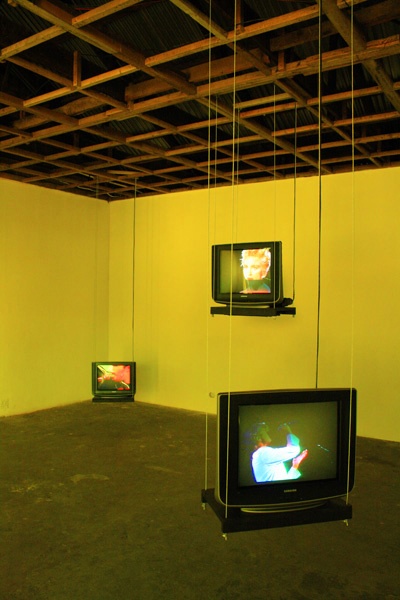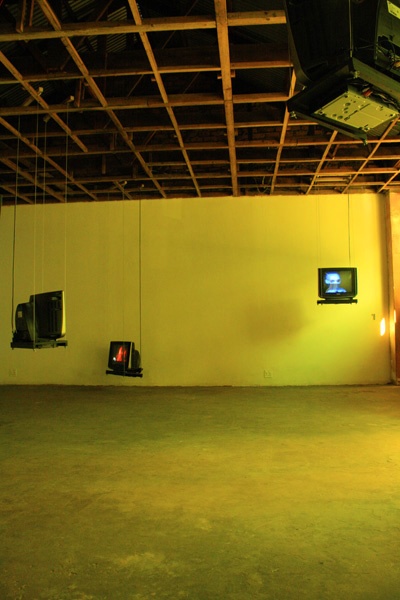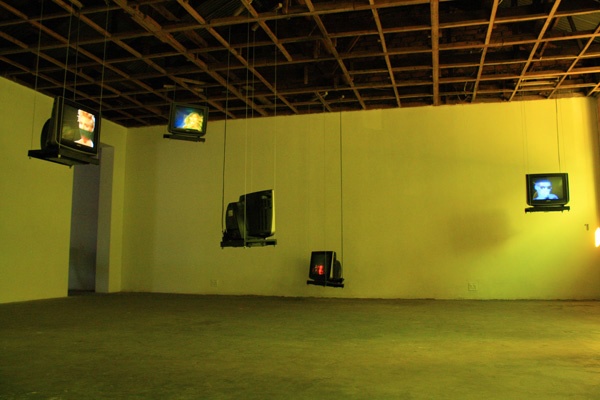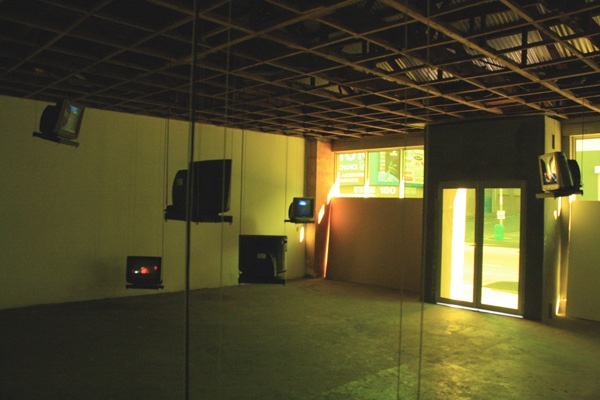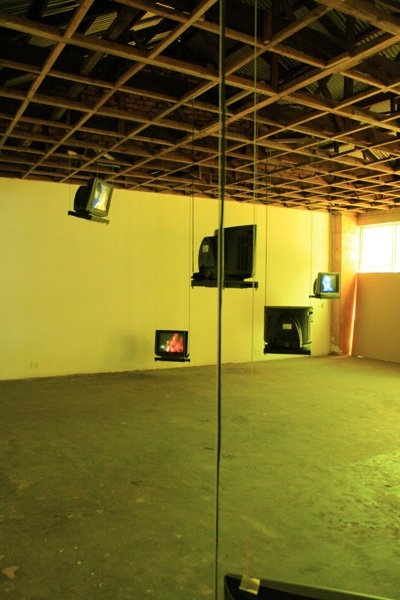Candice Breitz
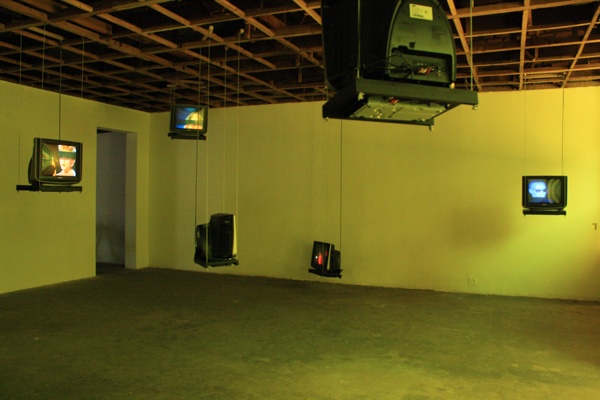
This artwork was loaned to the exhibition Dada South? Experimentation, Radicalism and Resistance curated by Kathryn Smith and Roger van Wyk, Iziko South Africa National Gallery, December 12, 2009–February 28, 2010. It was installed offsite at blank projects, Cape Town. It is indexed here as part of Smith and Van Wyk’s revisiting of the Dada South? Archive of materials at A4 Arts Foundation.
"The Babel Series consists of seven constantly stuttering DVD loops. Each steals a fragment of footage from the history of music video. The content of each video is relentlessly simple and literally monosyllabic: the seven different moments are appropriated from various pop performances (the line-up ranges from Madonna, Wham and Grace Jones to Queen, Prince, Abba and the Police). Each of the seven moments is then trapped in repetition as it is looped endlessly and noisily before the viewer on a series of television monitors.
"The seven loops play simultaneously in the space of the installation, creating a cacophonous babble that allegorically echoes the biblical story from which the work takes its title. What the seven videos have in common – beyond their reflection on narcissism and their deliberate choice of ambiguously-gendered stars – is that each evokes the primary building blocks of language. Together, the videos bang a millennial baby talk out of a series of dissonant beats, a baby talk that approaches sheer pandemonium. A small fragment appropriated from Madonna’s song Papa Don’t Preach, has her moaning “Pa – Pa – Pa – Pa – Pa – Pa….” Another video has Freddie Mercury gabbling “Ma – Ma – Ma – Ma –Ma – Ma….” Elsewhere, George Michael whimpers “Me – Me – Me – Me – Me – Me..,” while Grace Jones insists "No – No – No – No – No – No - No…." The bodies of the performers are frozen in language on each flickering screen – constantly emerging and disintegrating as they articulate – both automaton-like in their circular trances and at the same time peculiarly organic in their twitches and jerks. Each contraction of a muscle, gesticulation of a hand, blink of an eyelid, is repeated hypnotically over and over again as the loops run.
"Here repetition is both the vehicle through which visual and verbal meaning is created and the mechanism through which language degenerates into chaos. The doubling of 'Da' as 'Da-Da' for example, produces the potential for meaning, though the arbitrariness of that meaning is clear: depending on who we are, we might take 'Da-Da' to mean 'father' or 'yes' (Russian) or 'hobby-horse' (French) or 'here’ (German). At the same time, the constant repetition of 'DaDaDaDaDaDa' seems to make nonsense of the very possibility of transparent meaning. Language morphs and mutates into babble as repetition erodes sense and the possibility of communication. The pulsating bodies of the ambushed performers are opened to the projections of the audience as they somehow become vulnerable to the very viewers who would ordinarily be subject to the infantilizing spell of the pop hit.
"In its staging of primal language as always already tainted, the Babel Series alludes poignantly to the challenges facing subject formation in a world in which children often learn their first words by watching television or singing along to pop songs. The installation implies that the entry of the subject into language is inevitably inflected through the global media, restaging concrete poetry such that the utopian aspirations of earlier artists to universal language are jarringly displaced by the infernal universality of the media industry. The resulting discordant environment owes as much to the new poetics of Dada, Futurism and the Soviet avant-garde as it does to Andy Warhol and MTV."
– Candice Breitz interviewed by Magdalena Kröner, 2004
Interview originally published in Kröner, M. (2004) 'Candice Breitz: Schreien, Stottern, Singen: Das Playback des Ich: Ein Gespräch mit Magdalena Kröner', Kunstforum, 168, pp.276–283.
b.1972, Johannesburg
